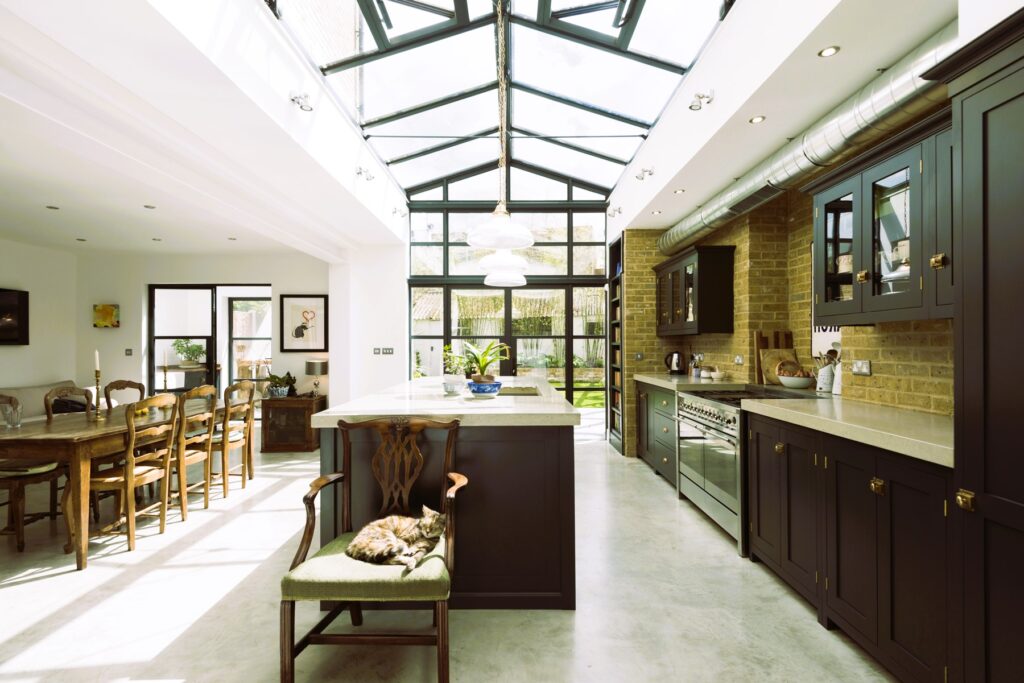Passive solar heating is an energy-efficient and sustainable approach to heating homes. By utilizing the natural energy from the sun, homeowners can reduce their reliance on traditional heating systems and lower their energy consumption. In this article, we will explore the principles of passive solar heating and discuss how to design windows that maximize its benefits.
Understanding Passive Solar Heating
Passive solar heating utilizes the sun’s energy to heat indoor spaces without the use of mechanical systems. The concept revolves around capturing, storing, and distributing solar heat within a building. It relies on the strategic design and placement of windows to allow sunlight to enter and heat the interior.
The key principle of passive solar heating is to optimize solar gain during the winter months while minimizing heat gain during the summer. This requires careful consideration of window orientation, size, and glazing properties.

Window Orientation
The orientation of windows plays a vital role in passive solar heating. South-facing windows receive the most sunlight throughout the day, making them ideal for maximizing solar heat gain in the northern hemisphere. North-facing windows, on the other hand, receive little direct sunlight and are more suitable for minimizing heat loss. Creating a Quiet Retreat at Home, Noise Reduction Solutions.
To maximize solar heat gain, south-facing windows should have a larger surface area compared to windows facing other directions. This allows for more sunlight to enter the space and heat the interior. East and west-facing windows should be smaller to reduce unwanted heat gain from the low-angle morning and afternoon sun.
Window Size and Placement
The size and placement of windows impact the amount of solar heat that can be captured. Larger windows allow for more solar radiation to enter the building, but they also increase the potential for heat loss during colder periods.
Strategically placing windows at appropriate locations can help balance solar gain and heat loss. For example, placing windows closer to the floor allows for better distribution of solar heat throughout the room. Additionally, using windows with different sizes and heights can create a natural convection current that circulates warm air within the space.
Glazing Properties
The selection of glazing materials and their properties significantly impact the performance of windows in passive solar heating. The following considerations should be taken into account:
a. Solar Heat Gain Coefficient (SHGC): The SHGC measures the amount of solar heat that can pass through a window. For passive solar heating, windows with a higher SHGC are preferred as they allow more solar radiation to enter and heat the interior.
b. U-Factor: The U-factor measures the window’s insulation properties. A lower U-factor indicates better insulation and reduces heat loss during colder periods.
c. Thermal Mass: Thermal mass refers to the ability of materials to absorb and store heat. Using materials with high thermal mass, such as concrete or stone, near windows can help store solar heat during the day and release it gradually at night, maintaining a more stable indoor temperature.

d. Low-E Coatings: Low-emissivity (Low-E) coatings can be applied to window glazing to reduce heat transfer. These coatings allow sunlight to pass through while reflecting a significant portion of the heat back into the room, improving energy efficiency.
Overhangs and Shading Devices
To prevent excessive heat gain during the summer months, overhangs or shading devices can be incorporated into window design. These elements help block direct sunlight when the sun’s angle is higher, reducing the cooling load on the building.
The size and angle of the overhangs or shading devices should be carefully calculated to allow for maximum solar gain during the winter while providing shade during the summer. This balance ensures optimal passive solar heating throughout the year.
Conclusion
Designing windows for passive solar heating requires thoughtful consideration of window orientation, size, glazing properties, and shading devices. By harnessing the power of the sun, homeowners can create energy-efficient and sustainable homes that reduce reliance on traditional heating systems. Passive solar heating not only helps save energy but also contributes to a more comfortable and environmentally friendly living space.
